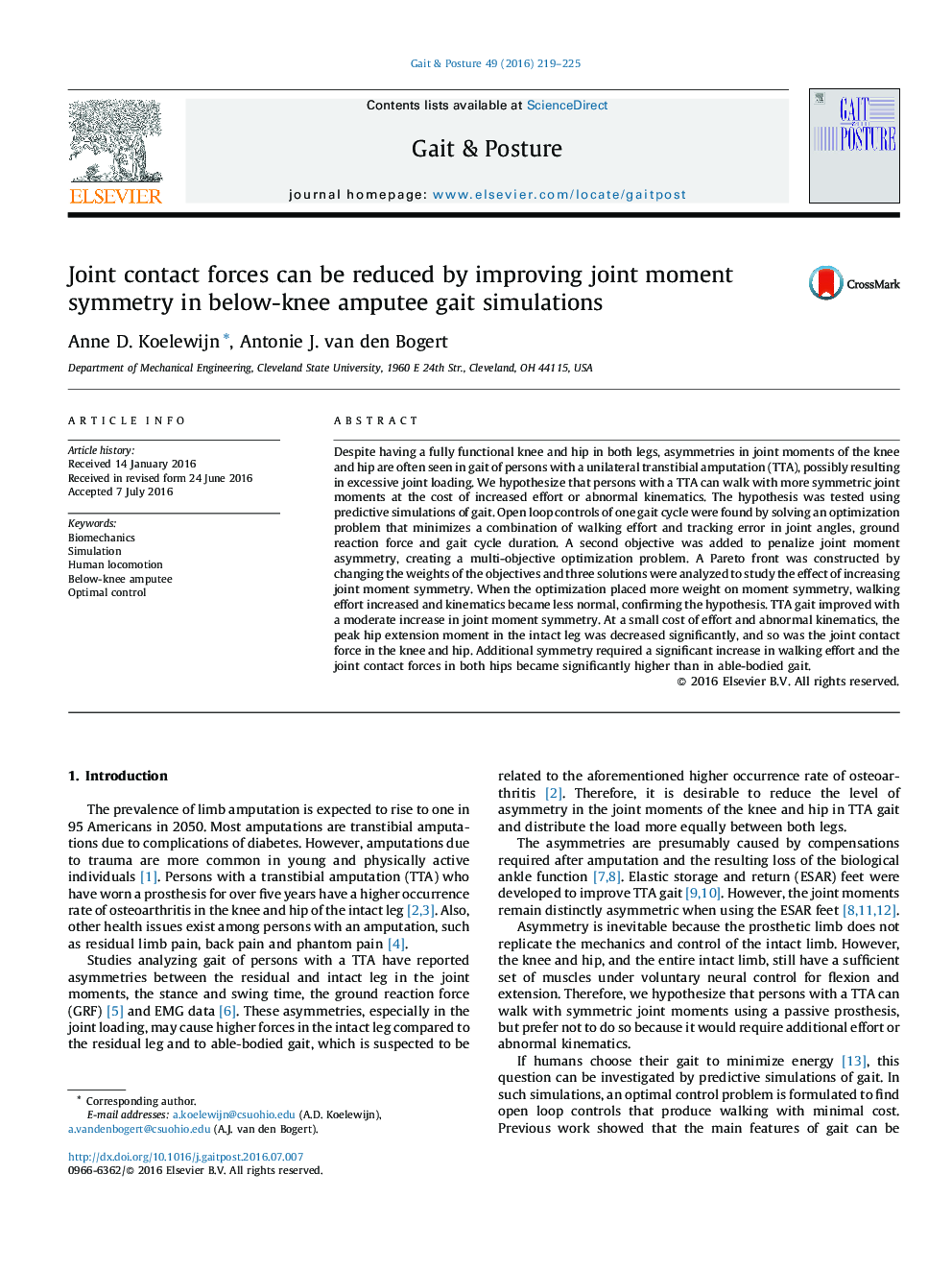| کد مقاله | کد نشریه | سال انتشار | مقاله انگلیسی | نسخه تمام متن |
|---|---|---|---|---|
| 6205450 | 1603846 | 2016 | 7 صفحه PDF | دانلود رایگان |
• Simulations of TTA gait predict asymmetric knee and hip moments with a passive foot.
• Little extra effort and deviation from normal gait increases joint moment symmetry.
• This gait reduces intact side joint loading and increases loading on prosthesis side.
Despite having a fully functional knee and hip in both legs, asymmetries in joint moments of the knee and hip are often seen in gait of persons with a unilateral transtibial amputation (TTA), possibly resulting in excessive joint loading. We hypothesize that persons with a TTA can walk with more symmetric joint moments at the cost of increased effort or abnormal kinematics. The hypothesis was tested using predictive simulations of gait. Open loop controls of one gait cycle were found by solving an optimization problem that minimizes a combination of walking effort and tracking error in joint angles, ground reaction force and gait cycle duration. A second objective was added to penalize joint moment asymmetry, creating a multi-objective optimization problem. A Pareto front was constructed by changing the weights of the objectives and three solutions were analyzed to study the effect of increasing joint moment symmetry. When the optimization placed more weight on moment symmetry, walking effort increased and kinematics became less normal, confirming the hypothesis. TTA gait improved with a moderate increase in joint moment symmetry. At a small cost of effort and abnormal kinematics, the peak hip extension moment in the intact leg was decreased significantly, and so was the joint contact force in the knee and hip. Additional symmetry required a significant increase in walking effort and the joint contact forces in both hips became significantly higher than in able-bodied gait.
Journal: Gait & Posture - Volume 49, September 2016, Pages 219–225
